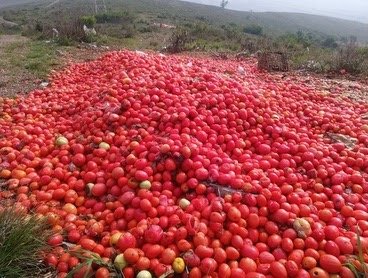ACRE Update — June 2022
On 1st May 2022, we pressed ahead with the ACRE project in Myanmar. Thanks to 18 participants who collectively committed US$ 64,000 to date, and based on an agreement targeting 150 acres in Myinnethi Village, Shan State, our ambition is to:
Restore a forest, out of what is now a rocky deforested land;
Return a profit to investors by selling the timber from pioneer trees
Contribute to solve the water access problem that plagues the villagers.
What has happened since then?
Base camp installations
During the first week, we hired an excavator and proceeded to dig 3 large pits for producing compost. During a meeting with village authorities, Community manager U Myint Zaw invited the villagers to bring their vegetal waste to the pits, instead of burning them.
Burning the waste is an ancestral tradition that goes back to the times of slash and burn. Changing this kind of habit takes time, tenacity and incentives: we offer the farmers to compensate the fuel cost of deliveries.
It took 2 weeks to build the staff quarters and workshops (see above picture). We also procured the basic equipment: bush cutters and jackhammer to dig pits in the rocky soil. Our most precious possession is now the makeshift truck (shown on left picture): a crude steel chassis, four wheels and a big tub powered by a “pump engine”!
Recruitment of workforce
We consistently repeat that our objective is to regrow forests for the benefit of local communities. Part of those benefits we promise come under the form of well paid agro-forestry employment opportunities: ACRE pays easily double the average daily rate, for stable jobs over extended periods.
Problem is that farmers of Myinmethi village are already too busy with their crops! After consulting with the Village Council, we agreed we had to recruit in poorer, more desolate areas, of lower Myanmar.
We chose an area called “the dry zone”, where communities survive in extremely adverse environments. We hired the first 18 staff, and by the end of May we were up to 40 already. This explains the need for the aforementioned staff quarters!
Progress of works
By 12th May, we had received the digging equipment and we began training the first batch of staff. They optimised the method and began working on plot #2. At 31st May afternoon, they’ve already dug 8,834 pits.
Each pit is 40 to 60 cm deep and 30 cm wide. The volume of the pits is crucial for the success of the project. When the young seedling is out-planted, we must give it chances to deploy its young fragile roots (see right bottom), and the larger the pit, the stronger and longer the roots will be!
We also worked hard on compost production. All the vegetal waste we can humanly collect (see right up) is processed by a grinding machine. The material is then ejected and fills the compost pit. It then stays for 3 months covered by a tarpaulin, out of sun reach, at which time it turns into rich organic compost that will be used when we begin out-planting seedlings.
Accounting
As of today, US$27,000 have been paid into the project, out of US$64,000 committed by our 18 investors.
Our burning rate is under control, at the end of May cash outflows are as follows all in US$):
Capital expenditure (Capex) is US$6,944, main items being truck (US$2,548) and staff quarters (US$2,183).
Operations expenses (Opex) is US$5,475, main items being salaries (US$3,107), gasoline/diesel (US$452) and tools (US$318).
Next steps
Over the course of June and July, our objectives are:
Complete digging the pits necessary for the current phase (15,000 to date, 45,000 needed by August);
Prepare the mix necessary for outplanting;
Complete the staff quarters;
Monitor the turnover of workers; and
Gather the first seedling and start outplanting by end of July.






